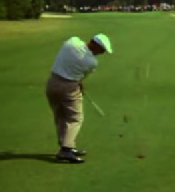The physics of collisions for a full golf swing (without the need to overcome obstacles like grass to get to the ball) seems to have been studied and researched in depth, especially now with all the high-tech equipment. Dave Tutelman’s website is full of useful information to identify facts about the reality of the kinetics/kinematics (I’ve added the definitions at the bottom of this post) of the golf swing but is lacking in detailed anatomical instruction.
Check out the link below and note his statements that I have copied and pasted:
Design Notes - Physical Principles p4 (tutelman.com)
-
Square clubface and direction of clubhead travel: Right on! The equation assumes that the clubface is square to the direction it is traveling. If not (due to improper swing or a lofted clubface), a lot of the momentum will be transferred to sidewise motion and spin, instead of ball speed.
-
Center impact on the clubface: Right on! Every club has a “sweet spot” somewhere near the middle of the face. The equation above assumes you hit the sweet spot. If you miss it, you lose ball speed. I have seen estimates as high as 7% loss of distance for every half inch you miss the sweet spot.
-
Strength or weight of the golfer holding the club: Simply not a factor! If the golfer couldn’t convert strength and weight into clubhead speed, then there’s nothing that they can do during impact to increase distance. As we saw in the section on vibrational frequency, the clubhead is swinging free at this point, with little more connection to the grip than if it were on a string.
Actually, that’s an overstatement. The shaft is infinitesimally stiffer than a string. If you do something at the grip during impact, 1/10,000 of that effect will reach the clubhead while the ball is still there. But that’s all.
Note:
Kinetics, branch of classical mechanics that concerns the effect of forces and torques on the motion of bodies having mass.
Kinematics is the study of motion of a system of bodies without directly considering the forces or potential fields affecting the motion. In other words, kinematics examines how the momentum and energy are shared among interacting bodies.
